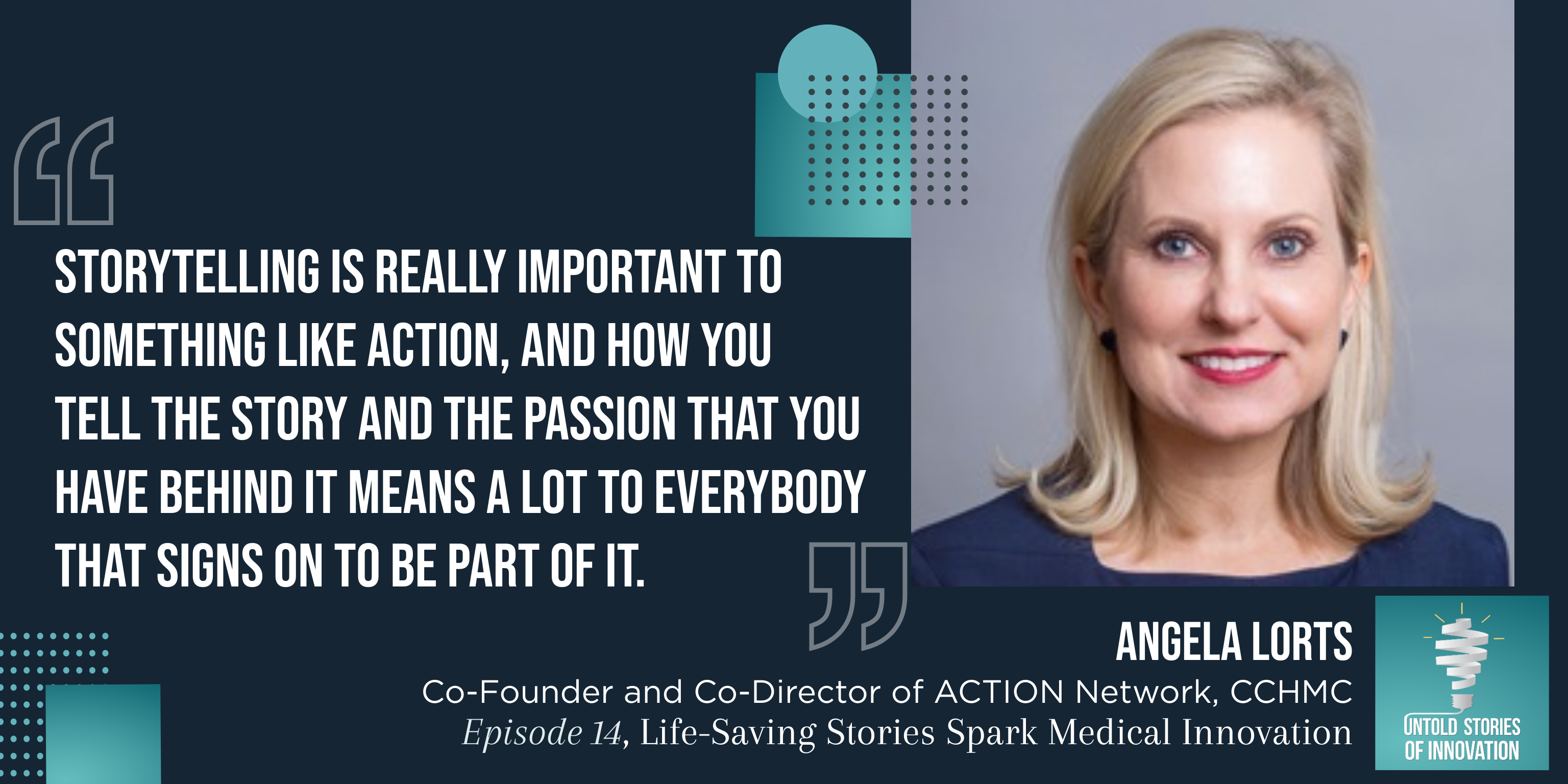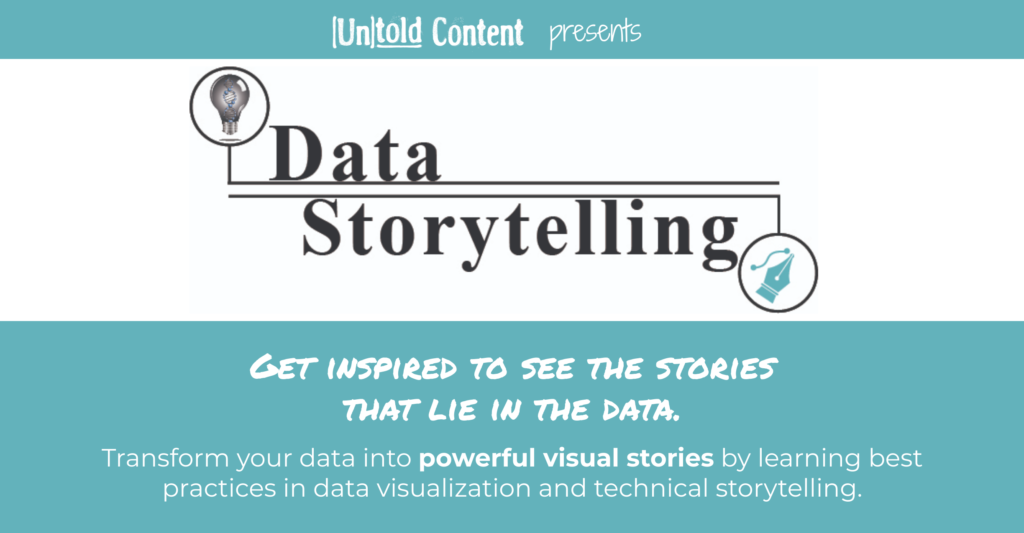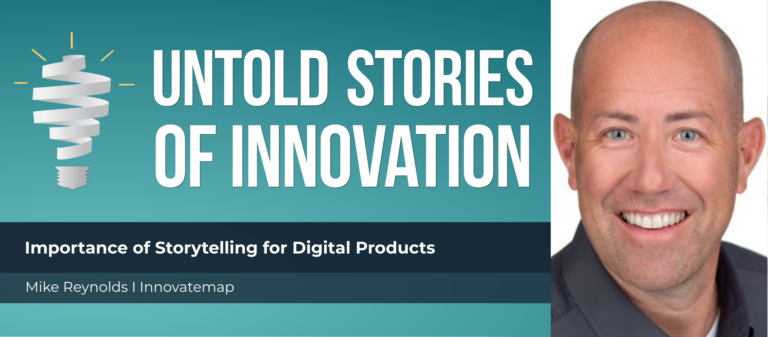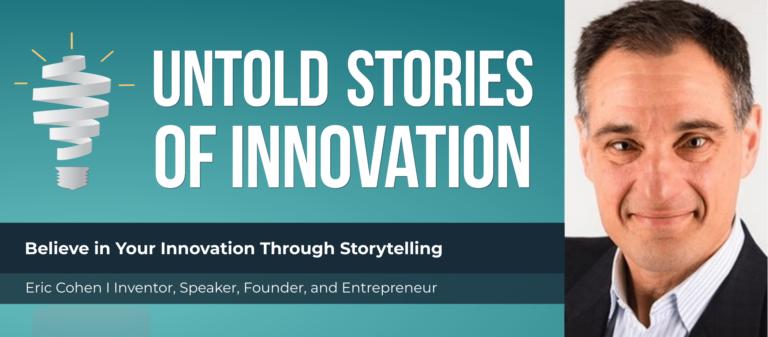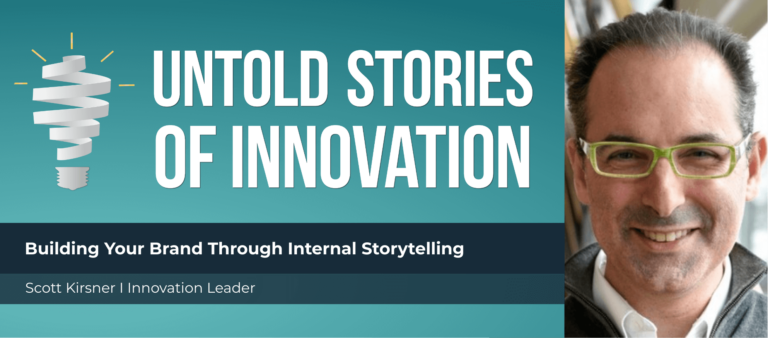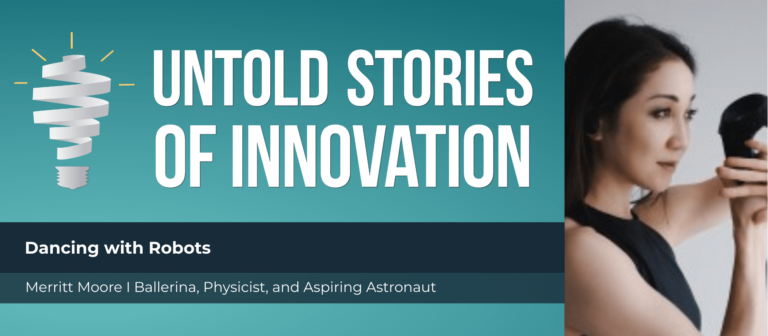Life-Saving Stories Spark Medical Innovation with Angie Lorts
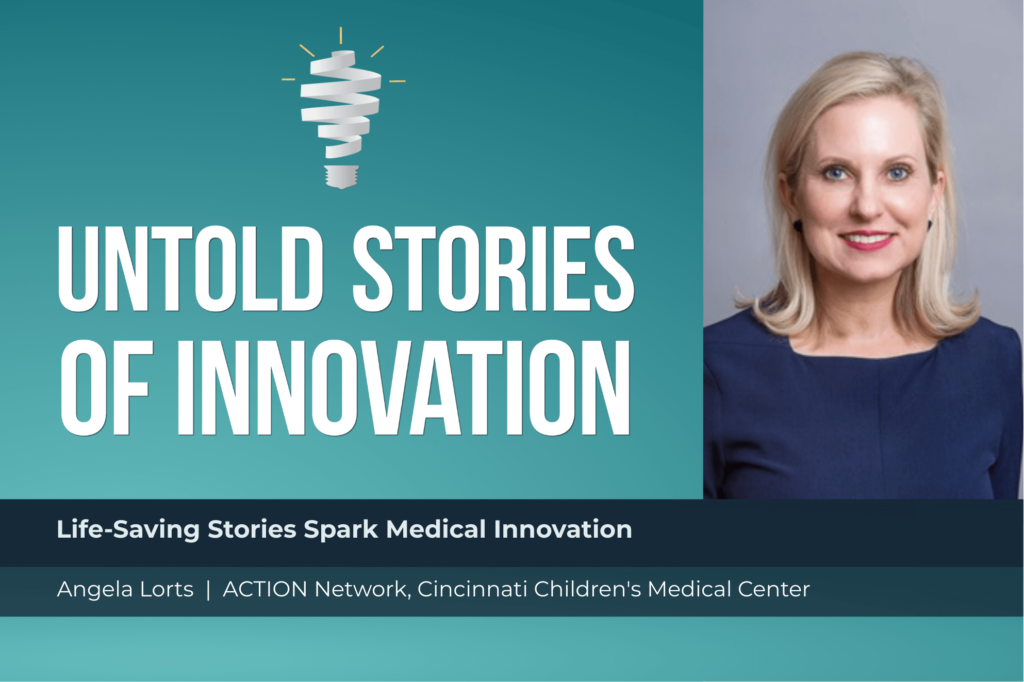
Life-Saving Stories Spark Medical Innovation - Untold Stories of Innovation
“Storytelling is really important to something like ACTION, and how you tell the story and the passion that you have behind it means a lot to everybody that signs on to be part of it.” —Angie Lorts, cardiac intensivist, co-founder of ACTION, and associate chief quality officer of outcomes at Cincinnati Children’s Medical Center
From today’s episode you’ll learn:
Why do stories matter to the innovation process? What values can be instilled in innovators who share stories? How do innovation leaders inspire creators to tell and share their success and failure stories?
Angie Lorts wears a lot of hats: cardiac intensivist, associate chief quality officer of outcomes at Cincinnati Children’s Medical Center, and co-founder and co-director of ACTION. In our conversation, she shares how the powerful combination of storytelling and simple data visualization helps people understand a problem and their potential role in solving it. In this interview, we look at storytelling as an invitation to deeper thought and dynamic action.
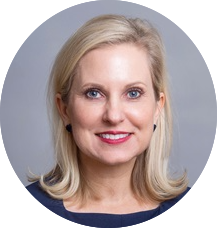
Angela Lorts is a cardiac intensivist and the Co-Founder and Co-Director of ACTION, a collaborative learning network founded in 2017 that now includes 37 institutions. ACTION works to improve critical outcomes for all pediatric and congenital heart failure patients. Along with their important research, they design animated videos, infographics, and even a video game to educate patients in an engaging way. Angie is also the Associate Chief Quality Officer-Outcomes at Cincinnati Children’s Medical Center, and she’s currently working to prioritize the improvement science that is being performed at CCHMC to focus on the “Outcomes that Matter” to frontline providers and families.
This episode, Life-Saving Stories Spark Medical Innovation is powered by data storytelling training from Untold Content and Data+Science. Transform your data into powerful visual stories by learning best practices in data visualization and technical storytelling. Whether you’re a PowerBI or a Tableau person—or just want to better communicate your data—this workshop will inspire you to see the stories that lie in the data. Learn more at untoldcontent.com/data-storytelling-training.
Katie: Our guest today is Angela Lorts. She is the co-founder and co-director of ACTION, which is a national collaborative learning network that conducts research around heart failure among pediatric patients. Angie, I’m so grateful to have you on the podcast today.
Angela: Thank you, Katie.
Katie: We’ve had the opportunity to work together a little bit. Can you tell us more about yourself? Tell me about your work at Cincinnati Children’s and ACTION.
Angela: Yes, of course. I am a cardiac intensivist, so I trained in pediatrics, cardiology and ICU care. Then seven years ago or so, I became very interested in advanced heart failure in children and specifically, how they’re supported with different devices, so medical management, but also different devices that are available to them. For the last seven or so years, I’ve been running a ventricular assist device program and artificial heart program at Cincinnati Children’s for pediatrics and adult congenital heart disease patients. With that, that’s how I became interested in starting ACTION.
Katie: And ACTION, why was ACTION formed? Why was it necessary?
Angela: Pediatric heart failure care is very different than adult heart failure care. Heart failure care in the adult world is very advanced, lots of medications are being studied, devices are being made for adult heart failure. Obviously, it’s one of the number one killers for adult patients. But for pediatrics, we have not had great therapies for children with heart failure. What we usually do is we follow along in the adults footsteps and so we use adult medicine to care for our children, but we don’t have any studies. There’s usually not clinical trials. The reason for that is because there’s not enough children to study or the children are also so varied… They vary so much in size and etiology of their heart failure.
Angela: What we ended up doing for these children is we, as I said, we kind of extrapolate data from the adult field and then for medications and then also for devices. So if a child has end stage heart failure and they don’t have enough blood going out to their body, they may get an adult device, which is made for an adult sized patient and it will be put in a really kind of innovative fashion surgically where we try to fit these larger devices into children. So it is a disserviced patient population-
Katie: Sure.
Angela: …which is really why we started ACTION because we felt like this patient population wasn’t getting enough attention.
Katie: Absolutely. Really, one health system in one region won’t see very many patients with these types of problems. Right? So it was critical to create a larger collaboration, a consortium around this particular area of medicine.
Angela: Right. So really that therapy for kids only ramped up in the last five to seven years. What we found ourselves doing is calling each other in the middle of the night, different centers because our experience alone was so limited. Some centers only do one device or take care of one end stage heart failure patient per year, and some centers take care of 30 kids that need devices. We really found ourselves relying on each other to learn more. So instead of just having kind of random text messages and group texts, we decided, “Okay, well let’s collaborate together and figure out how we can do this in a better fashion.” That was the start of… Or one of the reasons that ACTION started. The other thing that happened was about five years ago, we’ve collected all the data on some of our babies that were on devices and we found that the stroke rate was very high and we wanted to make that better.
Katie: Absolutely. Something I know about ACTION thanks to our work at Untold and collaborating with you is that it’s grown rapidly over the last-
Angela: Yes.
Katie: …couple of years. Can you tell us more about… We sort of heard about the origin story of ACTION. Can you tell us more about how you got buy-in at the health system level and then how it’s taken off and why you think that that’s been able to happen?
Angela: Sure. We started with five centers working together to decrease the stroke rates in these children. We were all just an invested group that really wanted to do this. I’ll never forget kind of the first meeting in 2017 where we had just a few providers sitting around trying to figure out what are we going to do to fix this problem. Then quickly, people heard and were just as interested in fixing the issue. So we are now at 40 centers two and a half years later. We laugh sometimes and say, “We really didn’t mean to grow that fast,” but we felt that every child in the United States and North America, actually, not to mention we do have some international partners now, but in North America should have the same care. So what we felt very strongly is not to ever exclude anybody. We kind of opened the doors to anyone who wanted to be involved. With that, came a lot of responsibility for the centers and they stepped up to do it. There was obviously money involved, but also there was lots of manpower.
Katie: Yes.
Angela: Data collection and changing practice and data use agreements and IRBs and all of that came with it, and all the providers of these patients we’re very invested in making this happen.
Katie: In all of our research around innovation stories at Untold, one of the story patterns that we discovered was the innovation that emerges due to a recurring problem; something that just feels unsolvable at the beginning, but through the perspiration and the commitment and the passion of the innovator, breakthrough can happen. I think this is such a beautiful example of how that can happen through collaboration and thinking much more broadly than just at the coworker level or even just the health system level. You’re looking at across the globe and thinking, how can we pull together best practices and work together to create innovation? The stories that are coming out of ACTION are so impactful because it’s really changing the lives and the outcomes for children and families.
Angela: I think that’s true. I think one really great example I like to share is that in normal academic medicine, we will write up a series of patients in pediatrics because we can’t often do trials because we don’t have the volume-
Katie: Sure.
Angela: ...or we will try to share a kind of anecdote and there’s case studies and that kind of thing and it takes us a long time to change practice because of that. With ACTION, what we’ve done by using each other’s experience and putting our data together, we have been able to change practice very quickly. So as I said, we started this in 2017. In December of 2018, all United States’s children on the Berlin Heart, which is the only approved device for children, we changed their anticoagulation from heparin, which is one drug to another drug to bivalirudin. That would never happen with traditional research.
Katie: It would’ve taken too long, right?
Angela: Yeah. So we always say that it takes 17 years, which I think there is some research to show. But we used everyone’s anecdotal experience and put that together and did not necessarily wait for a podium presentation or a manuscript to get submitted and reviewed a hundred times. Instead, we just put it together outside of the normal manuscript process to come up with a plan. With that plan, everyone was able to talk through their own teams to do that and change and the results have been really great.
Katie: It’s incredible. I know that both of us are strong believers in the peer reviewed process in terms of why that’s important. However-
Angela: Yeah.
Katie: …in terms of being able to innovate inside of healthcare, especially when the outcome is extremely dire and there’s an urgency, it sounds like that’s one of the reasons why the research and the data and the implementation you’ve been able to achieve has gone much more rapidly than what it could-
Angela: Right.
Katie: …had you had to follow a very strict kind of process.
Angela: Well, and we laugh now because we say that it’s just opposite of what we usually do, which is we usually pull all the data and do the peer reviewed manuscripts, which is, as you said, very important, and then we implement. This time, we pulled the data implemented and now we’re getting the manuscripts out. So it’s just a little bit of a different timeline, but with the same rigor, to be honest. We use the same manuscript process now and for how we did the rollout is we use quality improvement methodology. So we were able to really follow the data and we followed these kids very closely as we changed their anticoagulation to make sure they were having good outcomes.
Katie: How has that change impacted outcomes?
Angela: In our last data set, we have a 50% decrease in stroke rates in the-
Katie: Wow.
Angela: …little kids that we have been caring for with ventricular assist devices. In the larger kid, we have improved stroke rates by a lot.
Katie: Wow. It’s absolutely incredible. I would love to hear your perspective on why storytelling has mattered or what role it’s played in the success of an organization like Action.
Angela: I think storytelling is really important to something like Action and how you tell the story and the passion that you have behind it means a lot to everybody that signs on to be part of it. I do think that the passion from the providers that as we talked through why we needed to do this, that passion was just poured out of these slide presentations that we were giving to people. The other thing that we’ve really advocated for and is related to storytelling is that these devices that we’re using are not labeled for children. What happens is the adult devices go through the trial and they’re for the adults, but then we put them in children. So with that, we don’t always have the same clinical expertise from the industry and we don’t have educational materials for kids.
So as we started to tell that story and say, “How can we have devices for adults in the United States and we use those devices in children and we use them in the exact same fashion, but we aren’t able to support them the same way and we don’t have the same information and we don’t have the same education, how can that possibly be fair?” As we told that story, that story really resonated with people and regulatory bodies, as well as industry, as well as parents, as well as providers. So that’s another thing that Action is really driving forward is, how are we going to get these devices labeled for children to make sure that everyone is being treated equally and fair compared to when we don’t have the numbers to do a randomized trial?
Katie: That makes so much sense. I think there’s a universality to our care for children. It’s so instinctual for anyone no matter whether it’s your child who has that kind of diagnosis or it’s a child in your community or just even hearing you mentioned those numbers. I’m thinking of that particular child and those families and the providers who I’m sure, experienced so much heartache in the past before you started this collaborative and really inspired everyone to problem-solve together.
Angela: I think so, and we often say we take every child home with us in some fashion. So these children that we take care of… Usually, we’re taking care of these children for a long time. We become very close to them and their families and when the child you’re caring for has a stroke or has some adverse event or doesn’t make it, every single time that happens with these providers, it just builds another… it’s another brick that’s built into why we need to work together and why we need to make sure that every stakeholder, parents, families, industry, FDA, everyone’s working together to make it the best it could be.
Katie: Absolutely. When you’re reporting on impacts, tell us about what language you’re using to tell those stories. Obviously, there are a lot of personal stories you could share and I know you’re also doing a lot of data collection and quality improvement data collection as well. How do you share the impacts of ACTION?
Angela: I think that’s a really good question, really hard to answer in medicine. I think what we’ve been doing in the past before kind of rethinking things with the ACTION is that we do registry reports and we put out papers and they take years to put out. I think that that is all very important, but what we’re really trying to do in ACTION is show impact more real time. So trying to get that data on every kind of easily accessible way that we can get it to everybody so that parents and families are seeing, industry seeing, everyone seeing that data quickly and that’s something that we’re really working towards. Then how to visualize that data. We have not done a very good job in healthcare of data visualization, especially for patients and families, compared to other fields or non-healthcare fields. I think having patients and families and even payers looking through manuscript figures is very difficult to understand.
Katie: Oh, definitely.
Angela: I think showing the impact on a website with a really nice data visualization or a real time data report showing over time how things have been changing is going to be really important to healthcare moving forward.
Katie: Something I really respect about the ACTION community is the way that you are thinking about audience and how to change the story, change the data that’s presented depending on which audience you need to inform or educate or inspire. I know that when our team came to the Action group about six months ago, I think, we did a data storytelling workshop together and we really broke down, okay, who are the different audiences who might need to see information and research and be educated around the latest insights on how to care for patients in these conditions? Also, what do parents need to know and what might a child need to know and how can you take one data point and share it across so many different types of audiences?
Katie: Something I love about what your team in particular has a capacity for is that you realize how important that is and you are thinking about how to communicate to a child versus a bedside nurse versus a provider who really needs to be able to share with families and have those sort of talking points ready and for it to be consistent. Because that’s another challenge is you’re on the cutting edge of data collection in this field, and so how do you make sure that bedside staff are as up to date with their statistics and the information that they might convey to families as the intensivists would be?
Angela: Right. I think we are still struggling with that. What we talk about that almost every day is that-
Katie: Sure.
Angela: …what we come to when we have those discussions a lot of times is that everyone needs to see data in a different way and it needs to be explained in a different way. But if you really think about it, the simplest way to display data is probably best for everybody.
Katie: Yes.
Angela: So despite the fact that we think we want more details as providers, I can tell you that having some really simple way to visualize that data within 30 seconds before I go into a patient room might be much more appealing to me and I may know more about what I need to tell that family than trying to read a manuscript and figures at that moment. Although, I think we do need to think through each patient population, I think no matter what we do, we need to make it as simple as possible-
Katie: Absolutely.
Angela: …and maybe have it both ways. But simple data visualization, I think is going to be really important to our field moving forward.
Katie: Absolutely. I guess my other question for you around that idea is what are some of the other challenges that you face within Action and is storytelling a part of the solution in some ways?
Angela: Yes, storytelling is part of the solution. One of the issues with moving healthcare forward and being more innovative in healthcare is there’s a lot of concern regarding risk, and rightfully so, from either HIPAA, which is obviously very important to the legal manifestations of having innovation at your hospital to data privacy issues. All of that, you have to think through for every innovative idea that comes up. So I do think that’s a challenge to ACTION and I think that storytelling is really important because no matter what legal entity you’re dealing with that day that wants you not to do something or wants you to do it in a different way.
Katie: Sure.
Angela: I don’t want it to seem negative-
Katie: Right.
Angela: …but that’s their job to be protective of their institution. Storytelling to pick up the phone and say to the legal counsel of that institution, “We are trying to get devices to children. We are not trying to disturb your data or disturb privacy. We want the FDA to have this data so that we can move this forward so that we can give kids the best care they can get.” I think that storytelling of explaining what the innovation is doing and it’s not just a way to get some academic credibility or to promote yourself, it’s a way to actually improve the care of children. Almost anyone that you get on the other side of the phone, we’ll try to work through whatever issue they’re having. So I have found that… I don’t know if that fits with storytelling, but explaining-
Katie: Sure.
Angela: …the, “why?” is really important to be innovative in healthcare.
Katie: Absolutely, and you have such an important… It’s really a mission critical, “why?” that ACTION is committed to addressing. So it’s absolutely, it sounds like part of the strategy there is making sure that there is empathy and understanding for the problem and what role everyone is playing in the solution.
Angela: Yeah.
Katie: Something else I really respect about ACTION is that you’ve been really creative about how you educate patients and their families and providers because the everyday provider wouldn’t typically have a patient with these types of diagnoses and treatment plans. So it’s really critical to educate them and do that in an engaging way. I love that you’ve used a lot of creative mediums and I think you’re continuing to grow in that way, but you’ve created a video game and app. You’ve created animations and other educational materials and in-person videos as well to help bring device utilization to life, to help a child understand, “Why am I getting this device and what is this going to feel like?” and to help families different parts of their decision making. I would love to hear from your perspective what creative mediums you think work best to engage families and providers?
Angela: Well, I think it’s interesting to watch. We really became interested in this education piece, watching these children who are now on some life saving device or going home on a life saving device hooked up to batteries and having equipment with them, they are so good at taking care of their device. So they’re used to playing video games, they’re used to going to school and having their iPad, they’re used to doing… There’s some schools that everything is done on an iPad or a computer.
Katie: Right.
Angela: So they’re very used to that. You hand them a book and they start basically laughing at you when you hand them a binder of papers and they look at you like, “What are we going to do with this?” It’s eye opening to see them look at you that way, that we really need to get with it and have a digital transformation of how we educate patients, especially adolescent kids. As we thought about it more, we’re like, “There’s really not that many patient populations that wouldn’t better have something on their phone to be educated than taking a binder home that is 10 pounds of paper.” So the more we thought about it, we thought, “Let’s just do everything electronic and let’s try to do everything we can as an animation.”
Angela: We focused all of our educational materials on more of a younger age group knowing that everyone should like them that way. When people ask us, “Are these only for children?” We always say, “No.” We say, “These are for the parents who are stressed and the last thing they want to do is see some really serious video.” If they can see an animated video talking about what their child’s going to go through and what the risks are, at least it’s a little bit softer.
Katie: Sure.
Angela: We really did try to make something that seems to be for school aged kids, but we are going to try to use it and even our adult congenital heart disease patients and there is some company interest of using it in their adult populations as well.
Katie: There is growing research in the medical field around the role that animation in particular, can play in patient education, helping them retain information and comprehend it and then follow through on discharge instructions. It started with audio visual experiments, seeing how could a patient learn more from a cartoon than from written discharge instructions. I think now, we’re starting to see more and more studies around audio and visual or multimodal elements inside of patient education and there’s so much potential there. We see it in other industries where animations being used as a form of educating and it’s a more memorable way to convey information. Especially, when you think of the stress that any hospital experience creates, let alone an incredibly life critical kind of experience, how much that could lower stress and help people feel like the information’s understandable, that they can act upon it, that there’s the next step that they can take without having to worry about all of the million steps and questions that they have.
Angela: Right. We are really trying to use infographics to their best.
Katie: Yeah.
Angela: I think one of the reasons is I love infographics for myself. If I can look at something for 10 seconds and retain something on that infographic and walk away from it… So teaching with infographics is something that we’ve been very interested in as well. We have all the electronic files and the animations and the video game, which shows how to change out your device. But also, when we give data, trying to give it in little teeny pieces with a picture is something that we’re really working on. We have a long ways to go to change how we educate patients with heart failure, but I think we’re getting somewhere.
Katie: Absolutely. As we wrap up, I want to ask you one more question and it’s really more of an inspiring question. What advice would you give to other innovators, especially those in medicine as they prepare to share and amplify really good ideas?
Angela: Having thought about this before, thinking through what I’ve learned is that innovation really can’t happen if you’re trying to be perfect. Oftentimes, we’ll try something and take a risk and I think you have to take a risk. If you’re trying to innovate, you can’t make every, “I,” dotted and every, “T,” crossed right there when you roll it out. You may have to try something. It may fail and you have to try again. But I really do think that in medicine, we’re so used to trying to make everything perfect because any mistake in medicine or clinical care could be life threatening. So we are perfectionists and that is what we are built to be.
It’s taken us out of our comfort zone to say, “Okay, so now innovate and make this video game for kids to figure out how to do their controller.” Well, of course you want it to be perfect, but you don’t even know if anyone’s going to like it. I think that that is really important to health care or at least physicians to remember that if it’s not a life and death scenario and you’re trying to innovate, it may be worth rolling something out with a risk.
Katie: Absolutely. Thinking about failure narratives and the role that failure plays in the innovation process, the stakes are so high in medicine and yet, we won’t learn rapidly if we aren’t to some degree, willing to fail or have to tweak our solutions as we go.
Angela: Right, right. No, that is true. For children with heart failure, there’s not always great solutions to how to care for them. Using all of the data that you have and all of the advice you can get from everyone in the collaborative to make the best decision possible is sometimes isn’t an innovative decision, but the alternative is just not an alternative that you want to take on, you want to try. So whether it’s in care of the child versus teaching them in a different way, versus using the data in an innovative fashion to get a device labeled, everything we do, we have to think through in this situation, what can we do? We’re going to take a risk. It may not be the perfect decision, but we have to take a risk.
Katie: Absolutely. To me, the most beautiful part of what you and the ACTION community have created is conversation. You have connected to each other, you’re sharing data, you’re sharing insights, you’re there for one another. Whereas in the past, all of those decisions were happening in such a siloed way and you’ve completely transformed that through the innovation of ACTION and having it continued to grow. I wish for its continued success. Angie, thank you so much for being on the podcast.
Angela: Thank you for inviting me, Katie. Goodbye.
You can listen to more episodes of Untold Stories of Innovation Podcast.
*Interviews are not endorsements of individuals or businesses.

